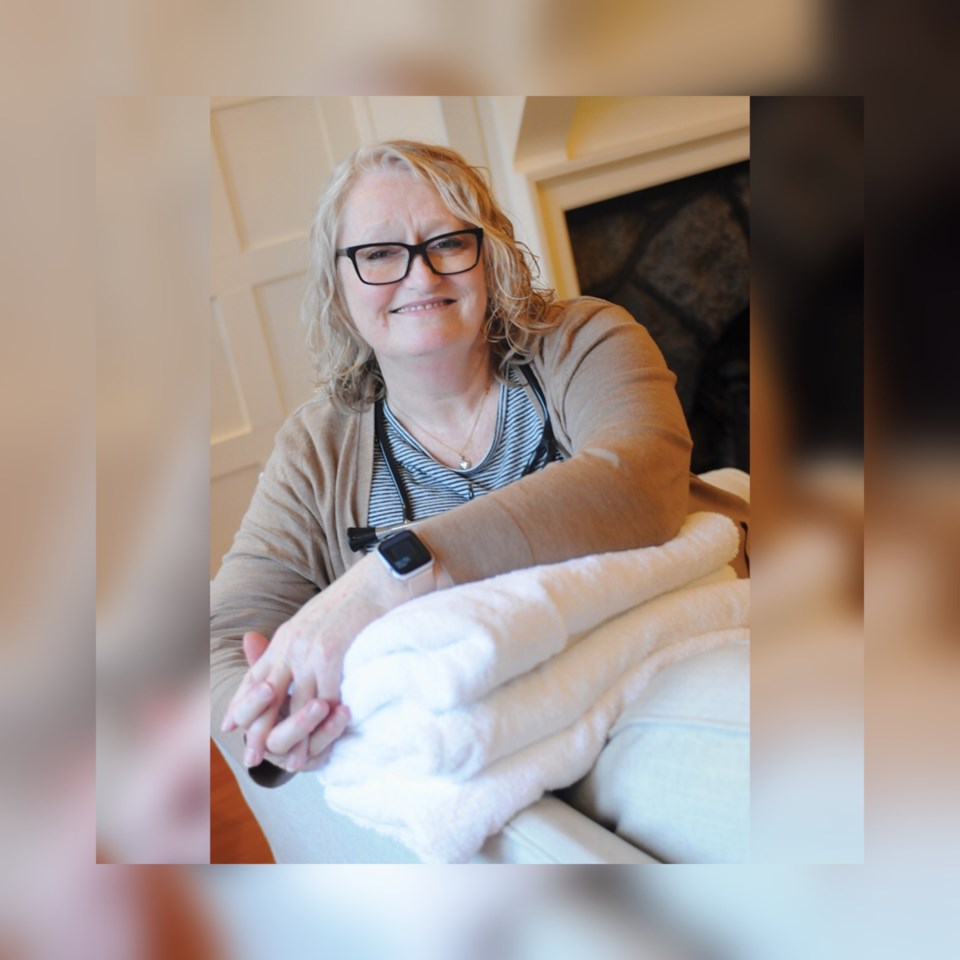This fall, Gillian Welsh has been able to do some things she hasn’t done in a very long time – like watch a movie all the way through, and go on a field trip with her youngest son’s high school class.
For the past 20 years, those kinds of everyday activities would often be interrupted as Welsh’s pager went off with the news that another baby was about to enter the world.
Two decades ago, Welsh was one of the first midwives to be registered on the North Shore, just a few years after midwifery became legal in B.C., in 1998.
Much of the time since has been a whirlwind.
During days she’s been on-call for births “you can guarantee that you’re probably not going to sleep for that 24 hours,” said Welsh. “There is no such thing as a normal week.”
The payoff has been to witness a baby’s first breath thousands of times in those years and the attendant joy, fear and excitement that accompanies those moments.
For Welsh, 61, one of the North Shore’s pioneering midwives, helping expectant mothers give birth has happened alongside helping midwifery itself into acceptance as a health profession.
Midwifery slow to gain acceptance in B.C.
“B.C. didn’t have the easiest time when it came to midwifery regulations,” said Colleen Fulton, another North Shore midwife and director for the Midwives Association of B.C., who cites Welsh’s influence in laying the groundwork for others in the profession.
Originally trained as an acute care nurse and later as a midwife in England, Welsh was culture shocked when she immigrated to Canada in the 1990s and found midwives still considered on the fringes of medical care here.
At the time, “there were very, very few midwives and it was really not very accepted,” she said, with many people viewing midwives as “weed-smoking hippies.”
In 2001, Welsh was one of the first local midwives to become registered by the newly minted College of Midwives (now the College of Nurses and Midwives), allowing her to work as primary caregiver to labouring women both at home and in Lions Gate Hospital.
All of the first registered midwives had previously worked as nurses at the hospital, which helped doctors feel more comfortable with the new arrangement.
Over the 20 years since then, midwives on the North Shore have proved themselves repeatedly, she said.
Midwives deliver over a quarter of local babies
Today, midwives deliver between a quarter and a third of all babies locally – no mean feat when you consider there are currently only five of them practising.
Women can choose either a doctor- or midwife-assisted birth. Those choosing midwives can also opt to have their babies at home or in the hospital. Fees are paid by the government in both cases.
For most expectant mothers, having consistent support while in labour, as well as after the baby is born, makes midwifery care appealing.
“If she's in hospital, she can expect her midwife to be there with her. We don't just come in and catch babies,” said Welsh.
But being a midwife comes with challenges.
Babies are notoriously unpredictable when it comes to making their entrances.
“There are always surprises,” said Welsh.
Planning a family life around unpredictable birth dates is often impossible, said Welsh, so midwives, like doctors, often miss birthdays, wedding anniversaries and family events.
While the government pays midwives, that amount has lagged behind the pay offered to other health professionals, said Welsh. Midwives also don’t get pension or sick day benefits.
That’s concerning, said Welsh, because while demand for midwives is increasing, so is the number of midwives leaving the profession.
“We’re facing a crisis,” added Fulton, who said while only 15 to 20 midwives graduate each year, about 30 per cent of those currently practising say they want to leave the profession in the next five years.
Pandemic adds layer of complication
And as it has for many health professionals, the pandemic has added an extra layer of complication.
When COVID hit in 2020, “we had absolutely no access to PPE,” said Welsh, and midwives were expected to find and buy their own protective equipment.
Pregnant women also grew more wary of hospital settings, and more opted for home births in the past 18 months – adding to the workload for midwives.
Finally, not everyone spent their time at home working on their sourdough bread recipes, it seems. The pandemic has produced a bit of a baby boom on the North Shore, said Welsh and Fulton.
“The birth rate has gone up because of COVID,” said Welsh. “We are busier now than we have ever been.”
Despite the challenges, Welsh said it’s been a privilege to take part in such an intimate moment for so many North Shore families.
“Every birth has its moments of anxiety and joy and terror and sadness. For many women, especially with first babies, it’s a huge rite of passage. And to be asked along on that journey, it’s such an honour,” she said.

